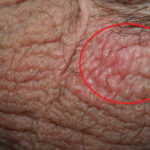Puberty is a remarkable journey—from a child’s innocence to the maturity of adulthood. For boys, this transition is marked by profound physical, emotional, and psychological changes: a growth spurt, deepening voice, the appearance of body hair, and new social challenges. While the process is natural, it isn’t always smooth. Some boys face abnormal puberty—either too early, too late, or with unexpected patterns—posing risks to both their health and self-esteem. Understanding these developmental anomalies is crucial for families, educators, and clinicians alike.
Scientific and Clinical Evidence: What the Data Tell Us
Puberty in boys typically begins between ages 9 and 14, triggered by hormonal signals from the brain that kickstart testosterone production. The process unfolds over several years, resulting in well-recognized milestones: testicular and penile growth, pubic and facial hair, growth acceleration, and voice changes.
However, deviations from this timeline are not rare. According to epidemiological studies, up to 2% of boys experience delayed puberty, defined as the absence of testicular enlargement by age 14. Meanwhile, precocious puberty (onset before age 9) is less common in boys than girls but carries significant psychosocial and medical implications.
Clinical causes of pubertal disorders range from constitutional delay (a benign, often inherited condition) to chronic illnesses, malnutrition, genetic syndromes (such as Kallmann syndrome), or dysfunctions in the hypothalamic-pituitary-gonadal axis. Environmental exposures—such as endocrine-disrupting chemicals—are also under increasing scrutiny for their potential role in altering the timing of puberty.
Case Vignette: A Puzzling Delay
Consider Jiahao, a 15-year-old boy brought to the clinic by his concerned parents. He is shorter than his classmates, lacks facial hair, and his voice has not changed. Academically bright but increasingly withdrawn, Jiahao reports feeling embarrassed during gym class and avoids social gatherings. Clinical examination confirms delayed pubertal signs. His story is familiar to pediatric endocrinologists: although his bone age is delayed, further tests reveal no underlying disease, and reassurance, along with regular monitoring, is provided. In other cases, however, more serious conditions may lurk beneath the surface.
Misconceptions and Harmful Behaviors
Pubertal disorders are often misunderstood or, worse, ignored due to stigma, cultural beliefs, or lack of awareness. Common misconceptions include:
– “He’ll catch up eventually—no need to worry.” While many cases involve constitutional delay, some reflect underlying medical issues requiring attention.
– “Growth supplements or herbal remedies can speed up puberty.” There is no scientific basis for such claims, and misuse can be harmful.
– “Late developers are simply less athletic or masculine.” These stereotypes can damage self-esteem and delay appropriate care.
Moreover, some adolescents may resort to dangerous practices—using unregulated hormones, performance-enhancing drugs, or questionable online advice—in a desperate attempt to “fit in.”
Correct Health Practices and Practical Recommendations
Timely recognition and intervention are vital. Here are best practices for families, educators, and clinicians:
1. **Education and Awareness**: Encourage open discussions about puberty at home and in schools. Understanding normal variation helps reduce anxiety and stigma.
2. **Routine Monitoring**: Pediatricians should monitor growth and development at annual checkups, noting deviations from established age norms.
3. **Seek Medical Evaluation**: If puberty seems unusually early or late, consult a healthcare provider. Key warning signs include lack of testicular growth by age 14, absence of other pubertal signs, or very rapid progression.
4. **Avoid Self-Medication**: Never use over-the-counter “growth enhancers” or hormonal supplements without medical supervision.
5. **Support Psychological Well-being**: Adolescents experiencing delays or rapid changes often face bullying or social withdrawal. Emotional support and, when needed, professional counseling are crucial.
6. **Address Underlying Causes**: If a medical disorder is detected (e.g., hormonal deficiency, chronic illness, genetic syndrome), early and appropriate management can optimize outcomes.
Expert Insights and Commentary
Dr. Wang, a pediatric endocrinologist (name fictional for illustrative purposes), emphasizes: “Parents are often the first to notice something isn’t right. Trust your instincts. Early evaluation can make all the difference—not just for physical health, but for a child’s confidence and mental well-being.”
He adds, “Puberty is not a race. There’s a wide range of normal. But when in doubt, seek professional advice rather than speculative remedies. Too often, we see boys who’ve suffered needlessly because myths and stigma delayed their care.”
Conclusion
The path from boyhood to manhood can be challenging, but awareness, timely recognition, and compassionate support ensure no adolescent faces these challenges alone. By understanding both the science and the human experience of pubertal disorders, families and clinicians can empower boys to grow into healthy, confident men.
References
1. Palmert MR, Dunkel L. Delayed puberty. N Engl J Med. 2012;366(5):443-453.
2. Carel JC, Leger J. Precocious puberty. N Engl J Med. 2008;358(22):2366-2377.
3. Rogol AD, Clark PA, Roemmich JN. Growth and pubertal development in children and adolescents: effects of diet and physical activity. Am J Clin Nutr. 2000;72(2 Suppl):521S-528S.
4. Practice Committee of the Endocrine Society. Clinical guidelines for evaluation and treatment of boys with pubertal disorders. Endocrine Society Clinical Practice Guidelines, 2015.



